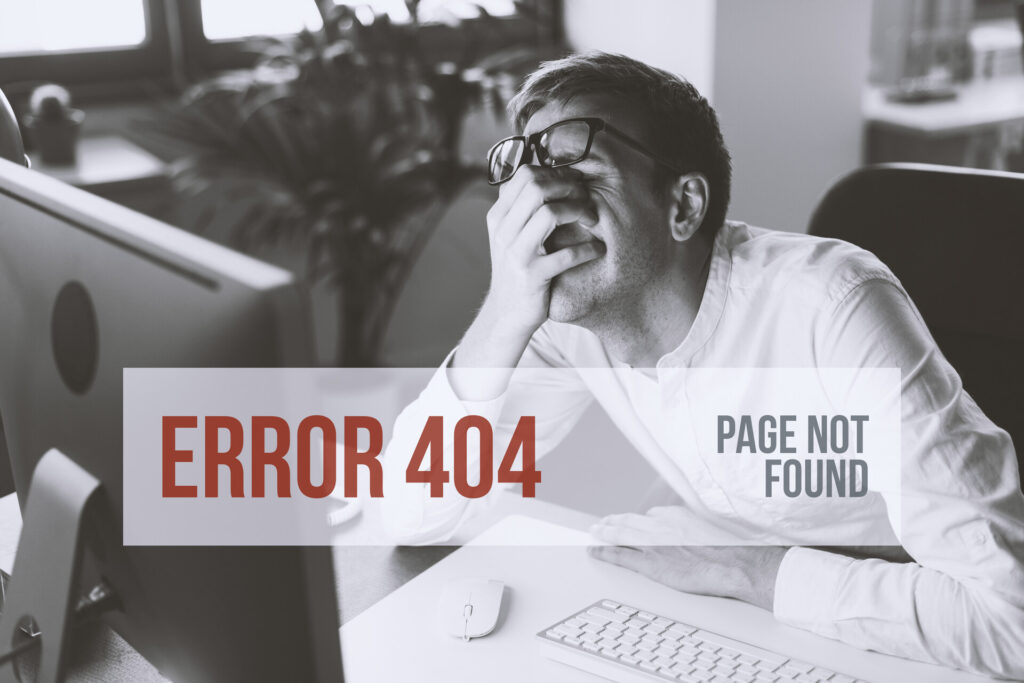In the vast labyrinth of the web, how do search engines decide which corridors to traverse and which to bypass? Central to this exploration is a little-known guidebook called robots.txt. But what is robots.txt? It’s the unsung maestro that orchestrates the dance between websites and search engine crawlers, ensuring harmony and precision. Join us as we unravel its nuances in this comprehensive guide to web crawling rules.
It is a file used by websites to direct web crawlers on which sections of the site should or shouldn’t be indexed. This guide provides an in-depth look into setting up and optimizing these rules for effective web crawling.
What Is a Robots.txt File?
At its core, these files are a standard used by sites, including those managed by an SEO marketing agency, to communicate with web-crawling robots (often known as search engine bots or spiders). They tell these robots which pages, perhaps even an unintentional “Error 404” page, on your site should not be processed or scanned. Think of it as a traffic cop for your site, directing which bots can enter certain parts and which cannot.
Explore the Anatomy of a Robots.txt File
A professional content writing agency surely knows the key to improving site speed and optimizing search engine interactions – a robots.txt file and an experienced website development agency can fix any bugs. Although this modest text file might seem inconspicuous at first glance, it holds the blueprint that search engine crawlers follow, dictating which pages to scan and which to bypass.
Here’s a simple breakdown of the contents of a typical file:
- User-agent – This specifies which bot the rule applies to. For instance, “Googlebot” refers to Google’s spider.
- Disallow – This command tells the bot which URLs it can’t access.
- Allow (less common) – This can provide more granular control, letting you specify parts of a disallowed directory that can be accessed.
You’ll see in the image below that all crawlers are told to avoid the /private/ directory, but they can access the public-image.jpg within that directory.

Why Every Site Needs a Thoughtful Robots.txt?
Search engines act as intrepid explorers, using web crawlers to map out the vast landscape. As they traverse this complex terrain, they often rely on a discreet guide – the robots.txt file. Much like the best SEO agency would apply tools like Google PageSpeed Insights to identify and rectify factors causing businesses to lose clients, a well-crafted robots.txt ensures that these digital explorers tread the right paths and sidestep pitfalls. Here are the compelling reasons behind its pivotal role in the grand scheme of digital presence.
SEO Impact
After you learn how it works and why it’s so important, it will become clear how a well-crafted robots.txt can be a game-changer in a site’s visibility in search engine rankings. Firstly, search engines respect the directives within this file. Therefore, inadvertently blocking important content can result in lowered rankings or missing out on organic traffic. Conversely, highlighting crucial paths can assist in better indexing.
Secondly, it plays a pivotal role in managing a site’s crawl budget. Each search engine assigns a specific amount of time to crawl a site, called the ‘crawl budget.’ Mismanagement can lead to essential pages not being crawled. So, don’t omit to optimize the utilization of this budget that will ensure the priority content is indexed timely and effectively.
Control Over Content Access
The Internet, while a hub of information, also demands discernment in content visibility, and robots.txt offers site administrators this discernment. It ensures that sensitive content from websites with information, like exclusive member areas or unpublished articles, remains private and off search engine radars. Furthermore, it’s common for websites to have both front-end (user-facing) and back-end (administrative) components.
The back-end areas, often irrelevant to the general public, can be shielded from indexing, ensuring that users only find pertinent and actionable content when they search. This delineation not only enhances user experience but also fortifies brand integrity by curating what content is available for public consumption.
Bandwidth Conservation
In the digital realm, every crawl by a search engine bot consumes bandwidth. For large sites or those with significant traffic, repeated and unnecessary crawling can strain server resources, leading to slower page load times and potentially increased hosting costs. That’s why a professional SEO agency tactically suggests employing it. That way, websites can dictate which sections are worthy of frequent crawls and which aren’t.

When Should You Use a Robots.txt File?
You use it when you want to strategically direct the search engine crawlers – the ever-curious visitors of the site – towards the content you’re proud to display and away from the area’s best left unseen. Whether to protect sensitive data, preserve server bandwidth, or simply ensure that your website’s most valuable content takes center stage in the search engine spotlight, a thoughtful set-up file becomes your tool of choice.
The image below illustrates that specific directories, and occasionally single files, are not permitted for scanning by search engine bots. While the instructions in the file are merely suggestive and can be overlooked by the bot, they usually adhere to these guidelines.

Common Misconceptions and Mistakes You Should Be Aware Of
An experienced social media marketing agency surely knows how this whole process works. But if you’re a beginner, you should know that it’s a common mistake to think that disallowing a directory in robots.txt will keep it hidden from prying eyes. It’s not true. If security is your concern, utilize proper security measures like password protection or server-side configurations.
Another frequent misconception is that it’s a security tool. While it tells polite web crawlers not to access certain areas, it doesn’t prevent malicious bots or users from viewing those directories. It’s not a security measure.
It also can’t show immediate results. Updating it doesn’t instantaneously affect results. It can take some time for search engines to re-crawl and re-index.

Advanced Usage and Tips You Should Equip With
While simple at its core, it offers a range of advanced uses for those willing to delve deeper into figuring out how to get people to your website. After all, it’s a regular SEO marketing services advice you should follow, so here are some tips for leveraging it to its full potential:
Implement Specific User-agents
Instead of just using a wildcard * for all bots, tailor directives for specific crawlers. For instance, User-agent: Googlebot-Image targets only Google’s image bot, allowing you to optimize how images are indexed.
Combine Allow and Disallow
You can have more granular control by combining both. For example, Disallow: /images/ but Allow: /images/public/ ensures only the public folder inside images gets crawled.
Regular Expressions
While the original robots.txt specification doesn’t support regular expressions, some search engines like Google do. Use $ for the end of a URL and * as a wildcard to match any sequence of characters.
Sitemap Reference
Always consider adding a link to your XML sitemap in the robots.txt using the Sitemap: directive. This can help search engines find your sitemap file faster.
Delay Crawl Rate
Some bots support the Crawl-delay directive, which tells them to wait a specified number of seconds between requests. This can be useful for servers that can’t handle a high frequency of requests.
Host Directive
If your site is available on multiple IP addresses, you can specify which one search engine bots should use with the Host directive.
Non-standard Directives
While not universally supported, some search engines recognize additional directives, such as Noindex for Google. Always ensure compatibility with the engine you’re targeting.
Comments for Clarity
Use the # symbol to add comments. It’s useful for explaining certain directives or noting changes for future reference, especially if multiple team members access the file.
Stay Updated With Search Engines
Major of them occasionally updates how they interpret robots.txt. Regularly consult their official documentation to keep abreast of changes.
Testing Is Essential
Before pushing changes live, check with tools like the Google Search Console’s Tester to verify that everything works as expected.
Essential Contents for Crafting an Optimal Robots.txt for Enhanced SEO
Navigating the world of SEO can be intricate, but understanding an optimal robots.txt file can be a significant step in mastering it. After all, for enhanced SEO benefits, it entails a strategic blend of inclusion and exclusion. Begin by identifying and excluding sections of your site that don’t add SEO value – like duplicate pages, admin areas, or private directories – to preserve the crawl budget.
Equally vital for every advertising agency’s client is specifying paths to valuable content, ensuring search engines can access them unhindered. Luckily, Made Online can guide them for you. Contact us, and we’ll improve your visibility and provide a better user experience.
Frequently Asked Questions About Robots.txt
What Is a Robots.txt File?
It is a simple text file placed on a website that tells web crawlers which pages or files the crawler can or can’t request from the sites.
Where Should the Robots.txt File Be Placed?
It should be placed at the root of the website, for example, https://example.com/robots.txt.
Can I Block Specific Search Engines or Crawlers With It?
Yes, by specifying the User-agent of the crawler, you can provide specific directives for it. For instance, User-agent: Googlebot targets Google’s main web crawler and you’ll block it.
Is It Case-Sensitive?
Yes, the file should be named “robots.txt” (all lowercase) and the paths specified within it are also case-sensitive.
Does Robots.txt Prevent Urls From Appearing in Search Results Index?
Not entirely. While it can stop search engines from crawling specific URLs, it doesn’t guarantee that they won’t appear in the search index, especially if other pages link to them. To prevent a page from appearing, you’d also need to use a no-index meta tag.
What Happens if I Don’t Have a Robots.txt File on My Website?
If there’s no such file, search engines will assume that they can crawl and index any content on the sites. There’s no penalty for not having one, but it’s recommended for more granular control over what gets indexed.
How Can I Check if My Website Has a Robots.txt File?
Simply type your website URL followed by /robots.txt in your browser, like https://example.com/robots.txt. If present, you’ll see its contents.
What Is the Difference Between Disallow and Allow Directives?
Disallow tells crawlers not to crawl or access a specific URL path, while Allow explicitly grants permission. Allow is particularly useful when you’ve disallowed a directory but want to permit certain files or pages within that directory.
Do All Search Engines Respect Its Directives?
While most major and reputable search engines respect the directives, not all web crawlers or bots do, especially potentially malicious ones.
How Do I Know if a Search Engine Crawler Has Read My Robots.txt File?
You can check server logs for requests of it. Most crawlers will request it before accessing other content on the sites.

